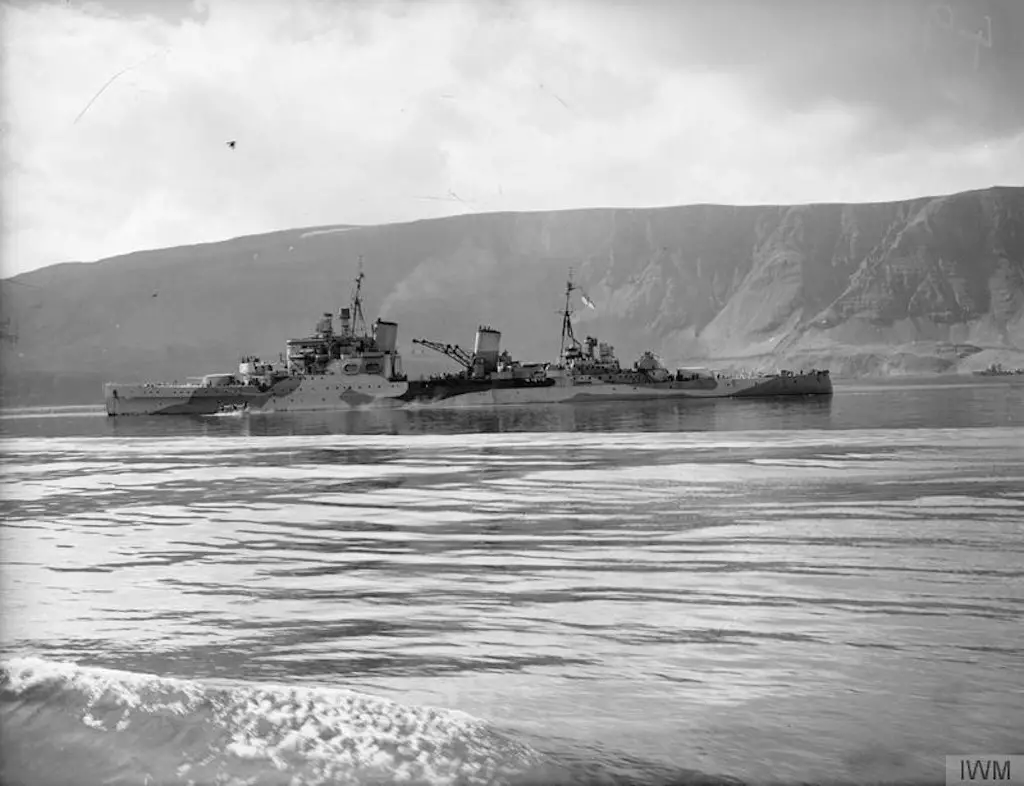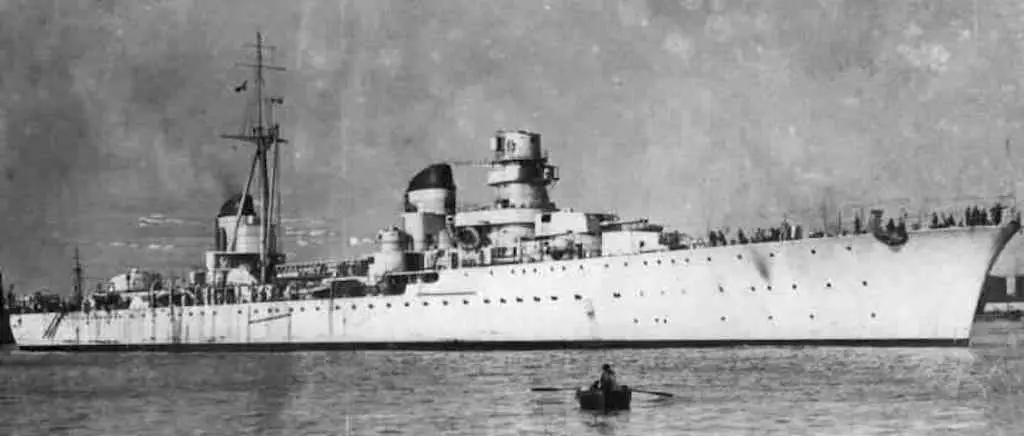Regia Marina Victory at the Battaglia di Mezzo Giugno
At the beginning of summer 1942, Malta was on the brink of collapse due to the renewed Axis bombing offensive. This situation led the British to set up a large-scale operation to re-supply the island. With Rommel’s Afrika Korps advancing towards Tobruk and preparations almost completed for an Axis invasion of Malta, the island had to resist at all costs. The Royal Navy planned two separate operations to re-supply Malta: Operation Harpoon and Operation Vigorous. Two independent operations would split enemy forces and improve the odds for the safe arrival of most of the materials and equipment.
Related: How Malta Became the Center Stage in the Mediterranean
Operation Harpoon and Operation Vigorous are known as the Battaglia di Mezzo Giugno in Italy. Both operations occurred between 11-17 June 1942.
Operation Harpoon/Battle of Pantelleria
Operation Harpoon is also known as the Battle of Pantelleria.
Departing from Gibraltar, Operation Harpoon included six merchant ships, and closely escorted by Force X, which included the cruiser HMS Cairo, nine destroyers, a minelayer, and several other supporting vessels. An indirect escort included the old battleship HMS Malaya, the aircraft carriers HMS Argus and HMS Eagle, three cruisers, and eight destroyers.
The convoy left Gibraltar on 13 June 1942. Italian agents operating in Algeciras, the port city near the “Rock,” learned of the departure immediately.

File photo of HMS Liverpool.
The following day came the first aerial attack from Italian squadrons deployed in Sardinia that mainly operated SM.79 Sparviero and Junkers Ju.87B bombers. The aerial attack severely damaged the cruiser, HMS Liverpool. Her damage so severe, she had to turn back with an escort of two destroyers. Additionally, the Dutch freighter Tanimbar sank.

An SM.79 attacking a convoy.
Meanwhile, news came from scout submarines that two Italian cruisers left Cagliari and directed to Sicily. It was the VII Cruiser Division commanded by Admiral Alberto Da Zara, comprising the light cruisers Montecuccoli and Eugenio di Savoia, escorted by the destroyers Malocello, Vivaldi, Premuda, Oriani, Ascari, Gioberti, and Zeno. The mission of Da Zara’s ships was to engage the western convoy as soon as it entered the Sicilian channel in cooperation with the Regia Aeronautica and the Luftwaffe.

Eugenio di Savoia crippled HMS Bedouin in Operation Harpoon.
After the indirect escort had turned back to Gibraltar, Frigate Captain Cecil Hardy commanded the convoy and its escort en route to Malta. In the early hours of 15 June, Da Zara’s warships intercepted them near the island of Pantelleria. The Italian destroyers Vivaldi and the slower Malocello attacked the merchant ships while the rest of Da Zara’s forces engaged the escort.
Outgunned by the enemy, the British started to lay down smoke screens to protect the transport ships. They then headed southwards. However, the Italians managed to hit the cruiser Cairo and two British destroyers. The Vivaldi received a hit in the engine compartment and became immobilized. It was saved by the Malocello, which laid a smokescreen around the sistership and repealed the enemy attacks.

Raimondo Montecuccoli of the Condottieri Class light cruiser.
In the confusion of the battle, the merchant ships became distanced from the escort. Italian and German aircraft attacked them. The oil tanker Kentucky caught fire and was later finished off by the Montecuccoli. The merchant ships Burdwan and Chant also sank.
The combined firepower of Montecuccol and Eugenio di Savoia crippled HMS Bedouin. An SM.79 Sparviero Torpedo Bomber finished her off.

HMS Bedouin sinking.
After the battle, Hardy decided to continue his run to Malta with the surviving two merchant ships and escorts. Da Zara could not immediately pursue the enemy because of a minefield he had to circumvent. Only two transports arrived in Malta on 17 June 1942. The other four merchant ships sank or had been damaged by Italian mines.
Operation Vigorous
Operation Vigorous, part of Operation Julius, departed Alexandria under Admiral Vian. It counted on 12 merchant ships and an escort of 12 destroyers and few corvettes. An indirect escort constituted eight cruisers and 14 destroyers with the HMS Cleopatra as the flagship.
At this point in the war, no British battleships were available in the eastern Mediterranean. German U-Boat U-331 sank the HMS Barham on 25 November 1941. The Warspite patrolled the Indian Ocean, and Italian frogmen knocked out of commission both the HMS Queen Elizabeth and HMS Valliant on 19 December 1941.
On 12 June 1942, the ships assigned to Operation Vigorous left Alexandria. Ju-88 bombers deployed on Crete spotted them the same day. The merchant ship City of Calcutta was hit and diverted to Tobruk, soon followed by the Elizabeth Bakke.
On 14 June 1942, the convoy came under renewed Italian and German aerial attacks that sank and damaged another three merchant ships. The convoy’s route was clear. Thus, Supermarina ordered the battlefleet, under the command of Admiral Iachino, to leave Taranto for an interception.
Iachino sailed with the Battleships Littorio and Vittorio Veneto, the cruisers Trento, Gorizia, Garibaldi, Duca d’Aosta, and 12 destroyers. This time, the destroyer Legionario came equipped with a German radar De.Te, used for the first time in action by the Italians to spot incoming aircraft.
That afternoon, Vian became informed by air recognizance of the Italian battlefleet’s presence and knew that his heavily outgunned formation stood no chance against the enemy force. Vian decided to wait in the hope that Iachino would have withdrawn under the attacks of submarines and land-based aircraft.

The Trento in 1942. HMS Umbra sank her on 14 June 1942 during Operation Vigorous.
Around 0500 on 15 June 1942, a British Bristol Beaufighter torpedo-bomber attacked the Italian fleet and hit the cruiser Trento, which became immobilized. Iachino ordered three destroyers to tow it back to the base while he continued his route to intercept Vian. At 0910, the British submarine HMS Umbra (P35) torpedoed the Trento, causing the ship’s forward magazines to explode. The warship capsized and sank, taking 549 souls with her.
Italian vessels also came under attack from some B24 bombers. However, only the Littorio received light damage.
With the Italian force approaching, at 0940, Vian finally decided to reverse course and head back to Alexandria. This time, Iachino’s resolution and battleship presence defeated the Royal Navy. Around 1400, Supermarina ordered Iachino to cease the convoy interception and patrol the area west of Crete, just in case the British tried to reach Malta again.
Axis bombers harassed the British convoy all day. Numerous escort ships received significant damage. The shattered formation finally entered Alexandria on the evening of 17 June. None of the merchant ships reached Malta.
Results of Battle
The balance of the battle was:
- Allied forces: One cruiser sank, five cruisers damaged, five destroyers sunk, three destroyers damaged
Six merchant ships sank, three merchant ships damaged, one corvette sank, 30 aircraft lost. - Axis forces: One cruiser sank, one battleship and one destroyer damaged, 43 aircraft lost
The attempt to relieve Malta in June 1942 was a complete failure. Only two out of 18 merchant ships arrived in the Grand Harbour. This failure led the British to mount a much more ambitious operation, scheduled for the next month, codename Operation Pedestal.
After two years of wartime experience, the Italian Navy and Air Force had managed to put in place a satisfactory level of coordination that ultimately paid off. The battlefleet accomplished its mission without making contact with the enemy. It perfectly fulfilled the role of “Fleet in Being” and a strategic deterrent envisaged since the beginning of the war.
Sources
Giorgio Giorgerini, La Guerra Italiana sul mare: la marina tra vittoria e sconfitta 1940–1943, Edizione Mondadori (2001).
Pier Paolo Ramoino, Una storia “strategica” della Marina Militare Italiana, Rivista Marittima (2018).
Riccado Nassigh “Le Battaglie Navali Italiane”, Delta Editrice (2011).